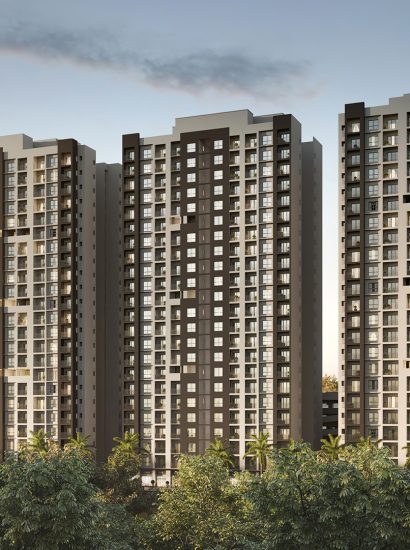Exploring the Growth and Opportunities
- History of Chennai
A Glimpse into the Past
Back in the year 1639, the British East India Company acquired land from a local ruler on the coast of Chennai and built Fort St. George as a garrison to protect their trading post. The city was originally known as Madras, and its name was changed to Chennai in 1996 as a tribute to the local ruler from whom the British purchased the land. Over time, Chennai evolved into a thriving centre for maritime trade and commerce, leading to the construction of an artificial harbour in 1881. By the late 19th century, it had transformed into a major hub for industry, commerce, and administration. This growth resulted in neighbouring villages like Triplicane and Mylapore being absorbed into Chennai’s expanding boundaries. Even today, Chennai continues to grow, encompassing an extensive metropolitan area spanning 5904 sq. km.
Chennai’s Evolution in the 19th and 20th Centuries
During the 19th century, Madras became the capital of the Madras Presidency, a colonial province. After India gained independence in 1947, Madras became the capital of Madras State, from which the State of Andhra Pradesh was carved out in 1953. In 1956, additional areas were allocated to Kerala and Mysore (now Karnataka), and in 1968, the remaining Madras State was renamed Tamil Nadu.
- Key Trends Shaping Chennai’s Real Estate Sector
- Growing Demand for Housing:The robust economy of Chennai has led to increased job opportunities in various sectors, such as manufacturing, IT, and ITES. With new startups and foreign companies establishing their presence in and around Chennai, the demand for residential accommodation has skyrocketed. Job-seekers are keen on finding homes close to their workplaces, especially with the continuous improvement of infrastructure that has made commuting easier. Apartments and gated communities equipped with top-class amenities are particularly popular among buyers.
- Growing Demand for Commercial Properties: The economic growth has also resulted in a surge in demand for office spaces, commercial complexes, and IT parks. The expanding business landscape of Chennai has created opportunities for companies to establish their operations, further driving the need for commercial real estate.
- Increasing Demand for Ready-to-Move-in Properties:In the post-COVID scenario, there has been an upward trend in the demand for properties that are ready for immediate occupation. Previously, prospective buyers were willing to wait for construction to be completed before moving in. However, the current job market dynamics have led to a preference for properties that are readily available.
- Growing Demand for Luxury Homes:Chennai’s vibrant economy and the rising number of high-net-worth individuals have resulted in an increased demand for luxury homes. Discerning buyers with a taste for exclusivity and opulence are investing in upscale properties in Chennai.
- Boost in Tourism:Following the relaxation of travel restrictions post-COVID, Chennai has witnessed a significant rise in tourist footfalls. This growth has led to an increased demand for real estate in the hotel and hospitality industry.
- Infrastructure Projects
Enhancing Connectivity and Liveability
The continual expansion of road networks and the ongoing Chennai Metro Rail project have significantly improved connectivity throughout the city. The Phase II Metro Rail Project, currently in progress, will add 93 km of new track to the existing network. Notably, infrastructure initiatives like the modernization of the Chennai Port, upgradation of the Chennai International Airport, and the development of a second airport for Chennai have made the city more appealing to residents, businesses, and tourists. Additionally, enhancements to roads, bridges, flyovers, water-supply, and sewage systems are expected to alleviate traffic congestion, reduce pollution, and enhance the overall quality of life in Chennai. Consequently, these infrastructure projects have contributed to the capital appreciation of real estate in the city.
- Suburban Growth
Expanding Horizontally
Chennai’s rapid horizontal expansion can be attributed to two main factors:
- Limited Land Availability in the City Centre:As a densely populated metropolis, Chennai’s city centre has reached its saturation point. There is very little undeveloped land available for further expansion, causing the prices of existing real estate to soar. Affordability becomes a major concern for most buyers.
- Increased Demand for Housing and Office Spaces: The population of Chennai is growing at an accelerated pace and is expected to surpass 120 million by 2030. This significant growth has led to a migration of people and businesses to the suburbs, where real estate prices remain relatively competitive. To support this suburban shift, the government has facilitated the development of infrastructure, including roads, schools, and hospitals. The presence of corporate offices in the suburbs has also resulted in job opportunities, contributing to the overall growth of these areas.
However, the rapid suburban expansion poses challenges such as increased traffic congestion, conversion of agricultural land for residential and commercial use, and disparities in social and economic conditions between the city centre and the suburbs. The government is actively working to address these issues and ensure balanced growth across the region.
- Real Estate Investments
A Promising Venture
Considering the promising prospects in Chennai’s real estate market, investing in properties can be highly rewarding. . The House of Godrej has been a byword for excellence and ever-dependable trust for well over a century and Godrej Properties continues with the same tradition of commitment to deliver quality each time.





